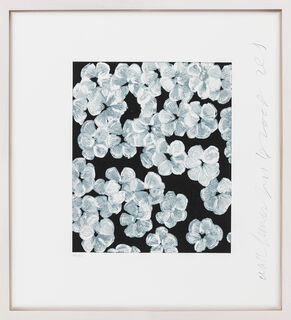Pop Art
Pop Art – The Fusion of Art and Mass Culture
Robert Indiana's LOVE sculpture, Roy Lichtenstein's comic-style works or Andy Warhol's pictures of soup cans: The epoch produced numerous famous Pop Art artworks that we recognise at first glance today. However, what the artists of Pop Art presented from the 1950s onward was a revolution in the contemporary art scene. Their works dealt with supposedly trivial motifs from the mass culture, which they found in the media and advertising. They took up everything that shaped the zeitgeist, for example, consumer goods, advertising signs or comics, along with images of celebrities such as actors or politicians. The typical features of Pop Art include highly stylised imagery and the use of few, often bright colours. Even though Pop Art was initiated by artists, it was not a phenomenon limited to art. Its impact extended to advertising, design, graphics, and fashion – and even today the concept and aesthetics of Pop Art are still present in many areas.
Pop Art Characteristics: Everyday Objects in a Cool Aesthetic
Pop Art had developed in opposition to the non-objective styles that were very popular in the 1950s, such as Abstract Expressionism, Informel and Action Painting. Pop Art's conception was to bring works of art closer to the reality of life, to be less intellectual and theoretical, and thus to make them accessible to more people. Therefore, Pop Art artists drew their inspiration from the mass culture that surrounded people on a daily basis. They took up everyday objects such as cans, cars, cigarette packs or pinball machines, as well as politicians, musicians, actors and other celebrities and icons such as Father Christmas, the Statue of Liberty and Mickey Mouse. The artists drew their inspiration from newspapers, magazines, advertisements, comic books, and photographs. However, Pop Art not only brought about unconventional pictorial themes but also developed a completely new aesthetic. The artists did not simply copy their motifs but rather quoted them and changed their meaning through an artistic transformation. In most cases, they removed the motifs from their original context and showed them isolated or with only a few other pictorial objects. They also distorted the objects or depicted them in a very stylised way. Typical Pop Art characteristics include a reduced colour palette with mostly very garish colours. In addition, new techniques such as photomontage, collage or screenprint were used. In our online shop, you can take a look at the works of various artists and buy Pop Art pictures.
A New Understanding of Art
In addition to motifs and techniques, the artists of Pop Art questioned the entire art business with all its rules and mechanisms. They wanted to free art from its elitist character and did not want to commit themselves to the separation of everyday and high culture. Thus, Pop Art could serve as pure entertainment but could be interpreted as a critique of consumer society. Some Pop Art artists also strove for a democratisation of art. The pivot of visual art was always the unique piece handmade by the artist, which was only affordable for a small group of buyers. Pop Art, however, strove to be accessible to many people. Screenprinting made a significant contribution to this. Printmaking was used as an artistic technique, as well as a means of producing art serially. Closely connected with the possibility of reproducing works of art was another taboo-breaking, which Andy Warhol, among others, committed. He rejected the idea of an art that was self-sufficient and wanted to be free of economic thoughts. Instead, he considered art and economic success to be closely linked. "Being good in business is the most fascinating kind of art. Making money is art and working is art and good business is the best art", was what he believed.
In our "Pop Art" section you can find a complete overview of one of the most important epochs of the 20th century, including Andy Warhol pictures, Roy Lichtenstein, James Rizzi, as well as works by Tom Wesselmann, and Mel Ramos.






























